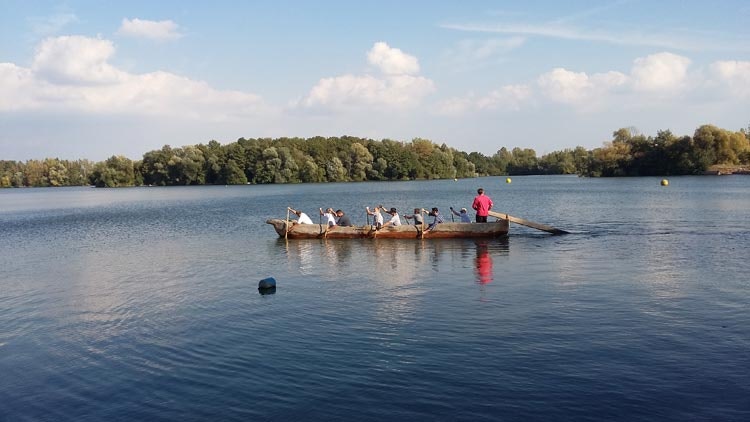Even in this time of computer simulations, you can still find a band of adventurers able to corroborate archeological findings in the harshest conditions. What will it be like returning to the wild seas in a dugout canoe after more than 20 years? And how will the yachtsmen from yachting°com help the Monoxylon expedition?
A group of enthusiasts who will set out on an adventure from the Attic peninsula to Crete in a canoe fashioned from a hollowed-out tree trunk in May 2019. They’ll sail in the footsteps of our ancestors from the Early Stone Age. This is the third experimental monoxylon expedition.
Originally, students of archaeology and other fields, led by the now associate professor Radek Tichý, wanted to demonstrate the possibility of cultural diffusion. The previous two expeditions were full of wild stories and successful discoveries acclaimed around the world. Will the return to the wild seas after more than 20 years, this time with the support of yachting.com, be a success?
Let’s chat with the bosun, Jiří Miler.
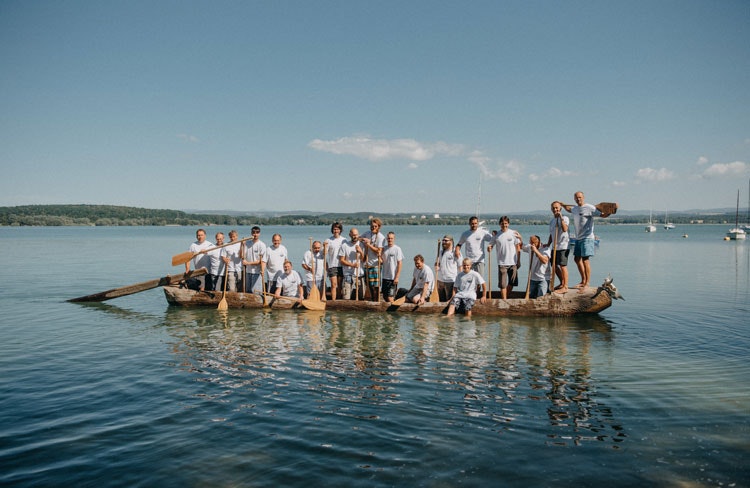
In the name of exploration and adventure
Jirka, how did this adventurous and crazy idea come about?
The spiritual father of this expedition is the now associate professor, Radek Tichý. The first expedition, Monoxylon I, in September 1995 was primarily a student expedition. At that time, Radek had finished studying History and had begun to study Archaeology.
Not much was known about prehistoric sailing vessels and Radek had always been interested
in the Neolithic period, cultural diffusion and the first farmers.That’s why we wanted to test the possibility that people, animals and crops were transported in dugout canoes in the Early Stone Age, around 7000 B.C.
We covered 290 km and sailed past the islands of Icaria, Mykonos, Tinos, Andros and Euboea right up to the coast of the Attic peninsula to the small town of Nea Makri.
And how did I get involved? Kind of indirectly. I don’t have much to do with archaeology and at that time I was teaching at the Department of Physical Education. Like every PE teacher, a position I’ve long since left, I have certain organisational skills and I can manage people. So I became the informal and then formal bosun and became responsible for the crew.
What was the first boat made from?
At that time, there were no known dugout canoes from that era, so it was a purely hypothetical design. We made it from the trunk of a poplar and used hand tools and fire to dig it out. We even tried to work the wood using replicas of axes and adzes from that period.
The boat was a little over six metres long. When she was finished, we realised she was unstable. Poplar is a lightweight wood, which is fine, but something had to be done about the instability.
So we added outriggers.

Fighting for our lives on a stormy sea
What inspired you when you were digging out the canoe?
At that time only one similar boat had been discovered on the Danish coast (Tybrind Vig). It’s hard to imagine now. The coast was once flooded, so that’s why lots of things are now underwater and it’s not easy to find stuff. A more famous discovery was made before the second expedition.
We were also in contact with Thor Heyerdahl, who sailed the legendary Kon-Tiki and the reed boat, Ra. He was happy to talk, but then he lost interest in us a little because we did not end up building a papyrus boat. It didn’t make sense for us to do so - there was no papyrus in the area, but there was wood.
What exactly did the expedition prove? Did it confirm your hypotheses?
The first expedition clearly demonstrated that diffusion is a possibility, as we were able to hop from island to island. The boat was able to transport nine people and additional cargo without any problem.
Did you come across any problems? You’d only tested the boat on a river before and you’re in much closer contact with the sea than on a yacht.
When the sea was relatively calm it was OK. The only problem was en route from Icaria to Mykonos. We only realised afterwards that it was one of the most difficult areas in the Aegean Sea as the wind just blows and blows and blows.
After Icaria we got caught up in very strong winds. The waves were over 3 metres high and that was really tricky. We kept the boat upright, but didn’t manage to move her forward. Due to the outriggers, the boat only reached speeds of around 3 km/hr on calm seas.
It was... basically a life-and-death struggle. It felt like buildings were crashing down on us. The helmsman managed to turn the boat, but it filled with water so we constantly had to bail it out. But even in this we were hamstrung - two people bailed out leaving only six people to paddle.
After an hour-and-a-half sailing we’d switched out four people. I didn’t switch in time and stayed another 15 hours. In the end we had to use an escort boat, which towed us through that bit. It was the only leg where we had to resort to such measures.
Depth of experience grows with the degree of danger overcome
How did you manage physically?
It was really interesting to see how the human body works. So long as we were paddling, all was fine. Then we got caught up in the waves and paddled for another hour at least, but didn’t advance at all. So that’s when the decision was made. We wouldn’t have made it from Icaria to Mykonos otherwise.
After being harnessed to the boat, people stopped paddling and were overcome with lethargy. It was cold and we were constantly being splashed with water. Then the sea sickness began - every now and then you swallow seawater, you’re soaked, people started throwing up.
What did you do?
After fifteen hours we felt we needed to change something. We started paddling, even though we were being towed by the escort boat. After half an hour we were in rhythm with the boat again and people stopped being sick. I was sitting next to a Polish guy who was constantly praying. We’re not used to that. By coincidence, there was also another really hairy bit on the second expedition and I was there for that, too.
Do you want to experience what these brave archaeologists got up to? Watch the video from the Monoxylon I expedition.
How did it all continue after that?
After three years we set off on our second expedition, Monoxylon II, in 1998. This time we had even more ambitious plans and a big contribution from the Faculty of Education. That was supposed to be the last one, but...
Were there any complications during the preparation?
The second expedition was huge and difficult logistically. We had some Austrian participants, who ended up dropping out in the end. A border guard was waiting for us at the border, as she’d received a tip-off that we were smuggling drugs.
The boat was towed on a boat trailer by a big Nissan Patrol and we had a coach for our three crews. Once again there were 8 paddlers in each, although we counted with as many as 12. Imagine, over 30 people going on a month-long expedition. You’ve packed loads of boxes and a big box of food for each day for everyone. They went through our sugar, tore open packets of soup, frisked the crew and we had no idea why.
That wasted almost half a day. When things came to a head we stood our ground and in the end they told us we could go. We managed to get them to pack everything up for us and then we found out it it was actually a member of the Austrian crew who set us up, out of revenge.

We set out on the trail of obsidian from Vulcano
What were you trying to prove on the second expedition, Monoxylon II?
We set out on the trail of obsidian from Vulcano on the cusp of September and October, 1998. We wanted to try offshore sailing in a monoxylon along the coast of Italy, France, Spain and Portugal.
The first stage from Sicily to the Lipari Islands was extremely important. You can find large chunks of obsidian (volcanic glass) on Vulcano. In the Neolithic period people were already using volcanic glass in various tools, such as specialised arrowheads or tools for working with furs, for example.
How did it go?
We picked up obsidian, big and small pieces, and paddled. We always tried to take in all the places en route where this obsidian had been found. Now we can be sure of exactly where it comes from. InPortiragnes in France, they found obsidian from Vulcano and it was clear that it had to have got there somehow.
Our expedition confirmed that offshore sailing is not at all difficult, although we did run into a few problems.
Did you build a new boat for the second expedition, or did you take the original?
We dug out a new one from oak, which was donated by the town of Jičín. It was perfect. In the meantime, the hull of a boat was found on the bed of LakeBracciano, 20 km from Rome. It was also made from oak and had a similar shape to the one we were building.
Oak behaves differently to poplar. It’s a hardwood and it’s great on water. It cuts through waves and has better stability. After a few days paddling we had absolute faith in the boat. She was fantastic, but weighed over 2.5 tonnes.
How many people paddled and crewed the boat?
The crew usually consisted of 8 to 10 paddlers and a helmsman standing in the stern. The maximum capacity of the monoxylon was 14 paddlers and a helmsman. The first 4 benches in the bow always had one paddler each and on the other benches, thanks to the width of the boat, there was space for two.
How did the crew prepare?
As it was offshore sailing, we swapped places on the beach, sometimes even in the water. There were some interesting places like the French Riviera, for example. The beaches were crammed with people and we caused quite a stir. We switched places on the millionaires’ beaches and all the cameras started clicking.
What route did you take on the second expedition?
On the second expedition we sailed in legs. After the first leg to Sicily we pulled out the boat and drove to Rome. We were back paddling before we hit Rome and we even symbolically towed the boat to Lake Bracciano, where that discovery had been made. There, entirely by chance, we ended up taking part in a dragon boat race, but we didn’t have a chance.
Monoxylon III expedition route
Then we continued on again and relaunched the boat in the area around Monaco. Then the French leg followed, a bit of Spain and finally Portugal. In total we sailed almost 800 km during the course of that month! The whole expedition culminated at the World’s Fair Expo ‘98 in Lisbon.
We were one of two European countries, together with Belorus, that didn’t have any representation there. Our consul in Portugal was therefore really happy that we were coming. The whole theme of the exhibition was actually overseas discoveries and we had a celebratory arrival along with some other boats.
Do you want to watch a video of the adventure-filled Monoxylon II expedition?
That day three fishing boats didn’t make it back
Did you come up against any big problems along the way?
In France we sailed part of the way on the Rhône, as the mistral came a month earlier than normal.
We woke in the morning and could hear it. We sailed off early, we often set off around half five. All was fine until suddenly the waves became 3 metres high. We saw the shore, it wasn’t far, about 500 m, but we stopped advancing and the boat started flooding.
There was a terrible wind blowing about 7 to 9 on the Beaufort scale. Our buckets blew away and we had to bail out using juice cartons, which we had emptied out. We had to get used to it, especially the helmsman. We realised that approximately every tenth wave was smaller, so we turned the boat and paddled accordingly.
It took an hour and a half, it was tough and the fear was palpable. That day three small fishing boats never returned. They didn’t survive, the wind also caught them by surprise. Back on the shore we ‘squeezed’ the water out with ouzo and plum brandy.
And what was the nicest bit?
The offshore sailing was really beautiful. White coast alternated with red, we got to a really stunning beach and slept there. Wherever we sailed to, we slept. And whenever it rained, we took cover under a tree, it didn’t bother us. We were also younger then :)
How did it work with such a big team? Did you get cabin fever?
The group was amazing, but logistically you can’t keep 30 people as one team. So smaller teams sprang up and pulled together when needed. I was only 10 years older after all, so they respected me. Sometimes I might have been unnecessarily harsh, but there were times when a look was enough and they knew that we were going to help, switch, stay...
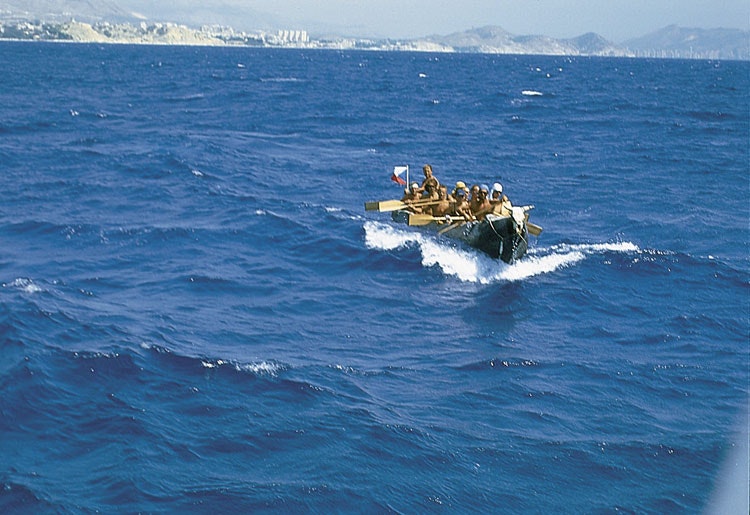
Anyway, in the end one of the most important things is to eat well and we had a problem with the cook. He couldn’t really manage, we had burnt mash that smelt of diesel...
And we were poor :).
In France we bought baguettes here and there, or we went to the market and bought cheese and olives. Apart from that we relied on whatever we’d brought from home: instant soup, chocolate bars, cereal. We drank tea, we couldn’t afford local beer. We brought everything with us, but it was fantastic!!!
Mobiles were just beginning to take off at that time. I had one of the first and I had it with me, but I didn’t call home and the journey took over a month. I barely remember anything. I live a lifefull of experiences and I have to make room for the new ones :). These experiences were worth it, though.
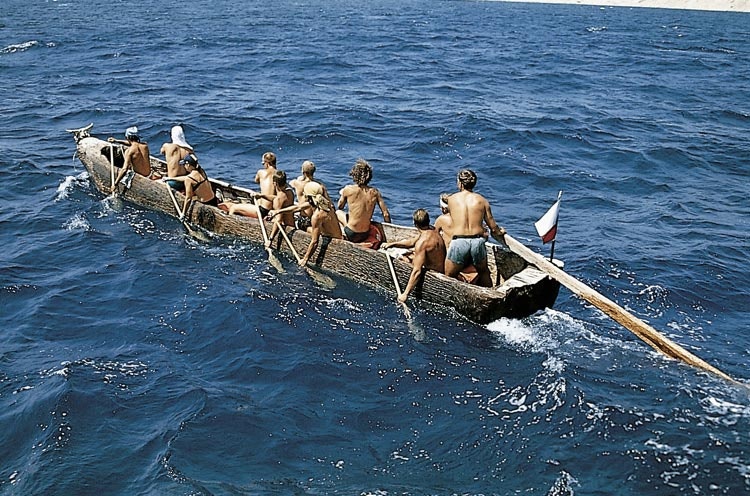
I like it when it’s not just about adrenaline and adventure
How did the idea for setting out a third time on the Monoxylon III expedition come about?
About a year ago I said to myself, ‘Damn, I’m an old man now,’ and when I think of meaningful things in my life, I think of this. I was active in other areas - skiing, whitewater rafting… there were other lovely things, but this expedition was definitely one of the most interesting things.
I like it when it’s not just about adrenaline and adventure. I caught that bug earlier when I was studying in Olomouc and taking an exam under Associate Professor Štěrba. I helped him coil ropes as he was going to climb an eight-thousander with his wife, Dina Štěrbova.
They didn’t just go to climb (she even broke the Czech women’s record), but they travelled with hydrobiologists who were carrying out research there. There was added value and our expeditions have that too.
It’s a different situation today. It’s been 20 years. All of a sudden there’s almost nothing similar happening out there. Even back then it was unusual. Central Europeans were in the Mediterranean Sea and were teaching the French and Italians, who were by the sea day in day out, a thing or two. They’re still angry with us even now, but at the same time they admire it.
And how did it continue? Did you arrange anything?
When I told myself it was worth doing, I went to Radek as the whole idea is his. He was running the archaeology department, though, and didn’t have time.
At the same time I bumped into a guy, a PE teacher from Náchod, who had also been on both expeditions and we started working on it together. I’ve long since left the field, I’m a manager now, and I’ll be 60 on this expedition!
About 2 months later I bumped into Radek again and he said: “Guys, you’re right. After half a year I could do it.” Then there was three of us and we started contacting members of the previous expeditions.
How did they react? Were they enthusiastic?
Some were, there’s around 60 % from the original team. There are the former students, even though they’re 45 now so they’re no longer spring chickens, but they manage physically more or less.
But it’s one of the things we have to really work on, as some of the stages will be extreme. The key one from Santorini to Crete works out at 26 hours if weather conditions are good. We will be taking turns.
Are you in training now? Will you be making any special preparations?
We’re leaving it down to the individual at the moment, but I know it can’t stay like that. Radek has a handmade paddle at home, for example. He drilled through the handle of a spade and attached it to the heating using thick elastic and paddles for an hour and a half a day every day. All of us have to work on this.
20 years is a long time, how will the technical equipment differ on the new expedition?
We’re going to have something we’ve never had before: a proper boat from yachting.com. She will be alongside our boat, although she may have trouble sailing so slowly :). It will be a catamaran, so we’ll have all the modern communication and yachting equipment.
We’ll do everything that is needed and that we’re forced to do. We’ll see if they’ll make us have a navigation light, last time we didn’t allow it. Everyone will have a mobile now, it’s a different time now. We’ve already been on a reconnaissance cruise at the same time the expedition will be.
We didn’t even really know what the meltemi is
Did the reconnaissance cruise throw up anything interesting? Something you have to change?
Not really. We changed the main things even before the cruise, when we were discussing it with seasoned yachtsmen and Jirka Zindulka. We changed the dates, it was supposed to be in July, we didn’t even really know what the meltemi is and now, of course, we understand it well. We’re already closely watching the weather and wind.
The reconnaissance cruise confirmed to us that it was possible. We sailed out of Athens, reached Santorini and returned slowly. We made a note of places we could stay. The main thing is to be on the same page as the captain. We’ll also gain a little more experience.
Are there any problem areas? Are you scared that something won’t work out?
We’ve already got a lot of information, but in the end it’s nothing dramatic. Some large waves might take us by surprise and we’ll get caught in a headwind. The key stage will then be from Santorini to Crete, which in an ideal situation will be 120 km if we don’t get blown off course. If we do really well we’ll sail at 5 km/hr, but even so it’ll take at least 26 hours. And that’s really groundbreaking
What exactly is the third expedition trying to prove?
We’re returning to obsidian. Not from Lipari, but from Milos. That was found in the layers of Knossos. Someone had to have transported it there and that’s what we want to prove.
And what else has changed in the 20 years since the second expedition?
People are lazy. Loads of things are just simulated on a computer and nobody bothers to test it out. But we will. We’ll be in the same situation as the people before. Sure we’ll have security, facilities on the boat, weather forecasts, but unlike us they would have had experience and time. They were probably more capable and better prepared physically. They’d known about the meltemi for years, they could guess the weather.
Are you building another boat?
We’re taking the one from the second expedition. We want it all as original as possible. A third of the boat was made with old tools - the oak was hollowed out with an axe and flint and then they continued with hand tools. It took about three months. We even have handmade wooden paddles.
What state is she in after all that time?
The boat dried out and is a tonne lighter. She was really cracked, shrivelled. We tried to patch her up, but she continued to leak. When we took her on the water she was shaky. We wanted to speed her up, so we made her thinner. We modified her, shifted the centre of gravity and it’s all good now.
We had stored her in the Archeopark in Všestary in a beautiful exhibition. When we wanted to move her out we had to knock down a wall.
Have you taken her on the water yet?
Yes, several times. We made a base at the Rozkoš dam and in May we launched her on the Elbe and dealt with the stability issue. We’re from different corners of the country, so part of the group would always get together and we’d make some modifications. Various teams sprung up, somebody focused more on finance, someone else did marketing, logistics.
During the July public holidays we all had training on Rozkoš Lake. We paddled, made adjustments and tried to simulate one stage. We switched crew every two hours, did a night sail and six hours of paddling. You wouldn’t believe what it does to a person - your back, shoulders, arms, bottom…
We’ll have another training a month before the expedition. Even before that there’ll be lots of get-togethers. In January we had training in the mountains and we finished making the modifications. We should really be ‘on fire’ by now, we’re setting sail soon!
We want to enjoy every moment
Doctors were always part of the expedition. Did they ever have any work to do?
We actually had two doctors, they were part of the crew, but we never really needed them. I’m pretty tough, but there was a scorpion bite, joint problems and calluses, inflamed wounds… Even this year there’ll be one doctor, an anaesthesiologist, but his main job is to paddle.
What will you personally be pleased with when you return?
Every day that we’re there will make me happy. If we manage to finish the voyage, that will be amazing, but I’d like to savour every moment there and I think the others feel the same. Much of the money comes from our own pockets, so we can be self-sufficient. We want to get to the finish line, but we also want to make the most of every moment.
We also have lots of other goals. On Milos we met the ‘mayor of mayors of all the islands’. They are fighting for the Venus de Milo, which is exhibited in the Louvre, and we promised that we’d sail one stage in support of them.
Do you still have any dreams left? Another expedition? Another plan?
I have lots of ideas in my head, some of them became reality, some didn’t. When the expedition’s finished there’llbe another film. We’re also going to make a book, I’d like to have a picture book. I’m at the age now where I only want to do things that mean something.
I’ve experienced many things. My children have dedicated themselves to environmental protection. My daughter set up an organisation to prote
ct the oceans: www.besea.cz and she’d like to work with with Sea Shepherd. I’d like to help her.
How is yachting°com supporting the Monoxylon III expedition?
- Jirka Zindulka offered his advice and expertise during the planning of the expedition, the date and sailing route.
- We were involved in choosing a suitable boat and negotiating a lower price.
- We recommended a captain. He speaks Czech and Greek, knows the sailing area well and has contacts. The captain has already sailed a large part of the route and as he’s a history buff, he’s really excited by the expedition.
- During the voyage we’ll be ready to offer help, assess the weather and discuss any route changes.
Monoxylon III expedition route
The Monoxylon III expedition starts soon on May 25th 2019. From the Attic peninsula, the planned route takes in the chain of islands to the island of Milos (Melos) and from there past the island of Santorini to Crete. You can follow us on Facebook, or come meet us in the Aegean Sea! Let the adventure begin and have a safe trip.

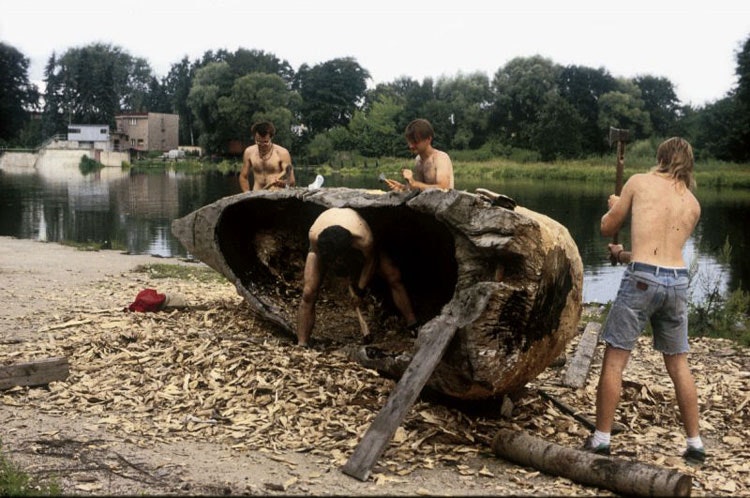
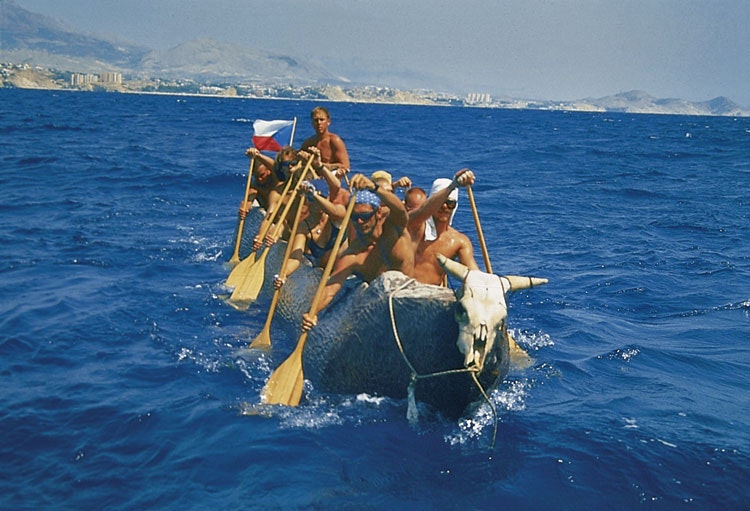

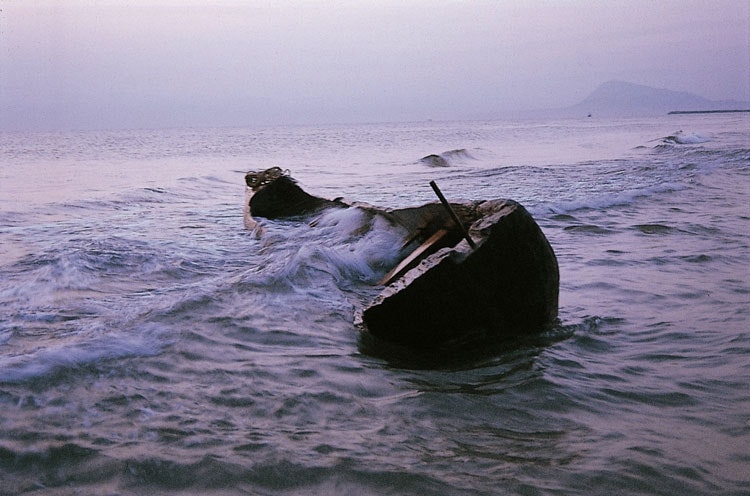

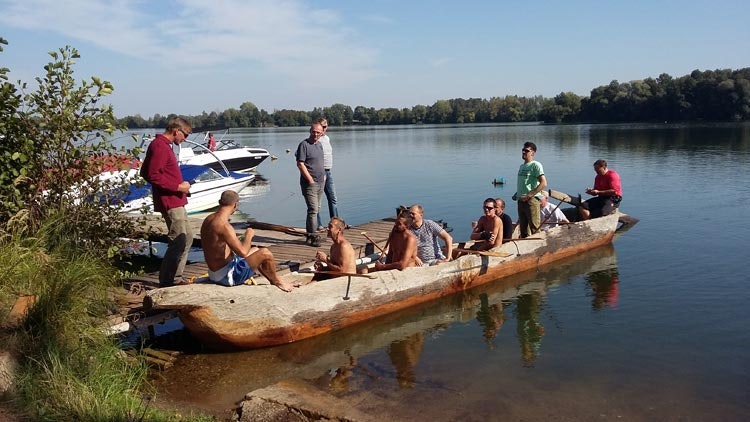
.aspx?auto=format&ext=.jpg)
